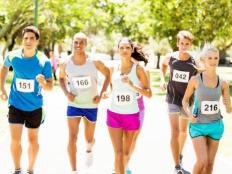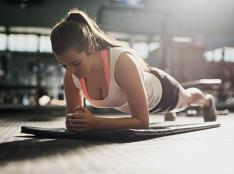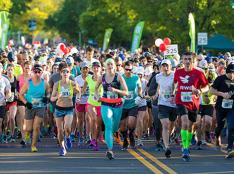Muscular Strength
Even though you can't get as big as a guy because of your lack of testosterone—women have up to 20 times less testosterone than do men—you can cheat the system a bit by tweaking your training based on your hormones.
"The fluctuations in estrogen and progesterone throughout your menstrual cycle alter the ability to build muscle and recover," says Stacy Sims, exercise physiologist and co-founder of Osmo Nutrition.
For example, a study in International Journal of Sports Medicine found that weight training every second day during the follicular phase of the menstrual cycle and once per week during the luteal phase increased quadriceps strength by 32.6 percent compared to just 13.1 percent increase when training once every third day over the whole menstrual cycle. The study suggests that training more in the estrogen-dominant follicular phase and less in the progesterone-dominant luteal phase leads to greater strength gains.
Sims suggests increasing your protein consumption before and after training when progesterone is elevated during your cycle because progesterone is catabolic, which reduces the body's ability to recover and build muscle.
Muscle Glycogen
Your menstrual cycle also influences your muscles' sensitivity to storing carbohydrate as fuel.
"From about day six to day 20 of the cycle—mid-follicular to mid-luteal phase—women can take advantage of the favorable glycogen-storage conditions for enhanced muscular endurance during both aerobic and high-intensity workouts," says Kim Mueller, owner of Fuel Factor Nutrition and co-author of The Athlete's Guide to Sports Supplements. "In contrast, during the early follicular phase and late luteal phase, glycogen stores drop off and endurance wanes. Nutrition becomes of paramount importance because with less carbohydrate, there's greater protein breakdown and suppression of the immune system."
Mueller suggests consuming more immune-enhancing ingredients such as low-fat kefir and yogurt that contain probiotics, foods with antioxidants like green tea and wheat germ, and foods with vitamin D such as wild salmon and fortified dairy foods. Push your endurance training during the middle of your cycle when you have more glycogen in your muscles.
- 2
- of
- 3
About the Author

Get ACTIVE on the Go


Couch to 5K®
The best way to get new runners off the couch and across the finish line of their first 5K.
Available for iOS | Android






Discuss This Article